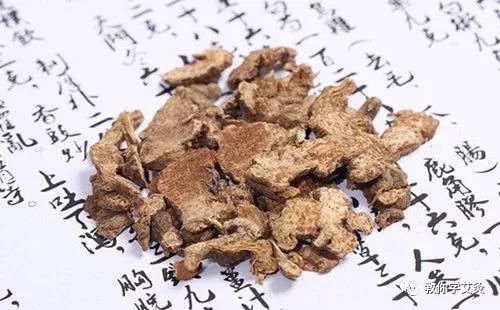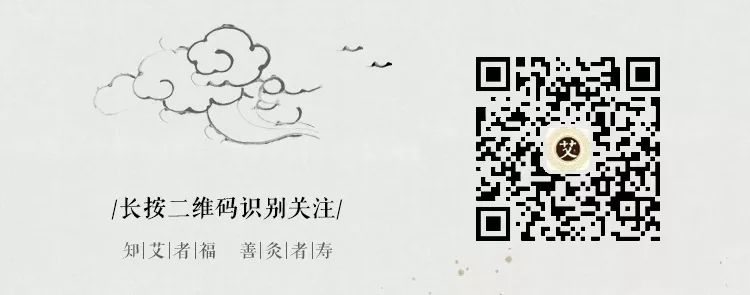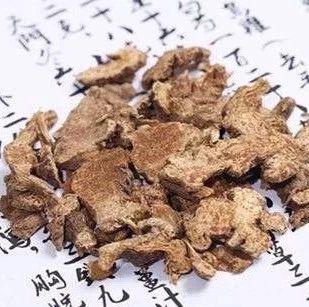Cang Zhu (Atractylodes) is the rhizome of the plants Nan Cang Zhu (Southern Atractylodes) and Bei Cang Zhu (Northern Atractylodes), first recorded in the Shen Nong Ben Cao Jing (Shen Nong’s Classic of Materia Medica), classified as a superior herb, noted for its ability to “be made into decoctions. Long-term use can lighten the body, prolong life, and prevent hunger.”

Xu Shuwei’s Treatment of Strange Illnesses with Cang Zhu
Xu Shuwei was a renowned physician of the Song Dynasty, known for his diligence in studying medical texts late into the night, always drinking alcohol before bed. However, after several years, he developed a strange illness characterized by a rumbling stomach, pain in the hypochondrium, reduced appetite, and sweating only on the right side of his body during summer. Xu Shuwei carefully analyzed his condition and believed it was due to long-term alcohol consumption damaging his spleen and stomach, leading to “dampness obstructing the spleen and stomach.” Therefore, he chose Cang Zhu as the main herb, ground it into powder, mixed it with powdered jujube (Da Zao), and raw sesame oil to form small pills, which he took daily.
After a few months, his strange illness was indeed cured. It turned out that Xu Shuwei’s fondness for alcohol had harmed his spleen and stomach, causing spleen deficiency and inability to transform dampness. Cang Zhu, being warm in nature and bitter in taste, can awaken the spleen and transform dampness, thus alleviating all his symptoms.
Treatment of Rheumatism
The primary function of Cang Zhu is to strengthen the spleen and promote the transformation of dampness, and it can also dispel wind and scatter cold. In Traditional Chinese Medicine (TCM), Cang Zhu is commonly used to treat rheumatic diseases.
In ancient times, rheumatism was referred to as Bi Zheng (obstruction syndrome), believed to be caused by a combination of wind, cold, and dampness. However, due to the warmer climate in the south, dampness can easily combine with heat, leading to distinctions between cold and heat types of rheumatism. Regardless of the type, Cang Zhu can be used for treatment.
Here is a small formula: 30 grams of Cang Zhu, 10 grams of Gui Zhi (Cinnamon Twig), and 30 grams of Tou Gu Cao (Hollow Stem Herb). Boil these three herbs together and use the decoction to soak the painful areas, or apply a towel soaked in the herbal juice to the painful areas for effective relief from pain caused by rheumatism.
Treatment of Diabetes
Diabetes, known in TCM as Xiao Ke (wasting-thirst), includes water-damp type, yin deficiency type, and spleen-kidney yang deficiency type. Patients with the water-damp type generally have a whitish tongue with a thin white coating; those with the yin deficiency type mainly present with a red tongue, thin and rapid pulse, thirst, and dryness of the mouth; while those with spleen-kidney yang deficiency show pale complexion, cold limbs, and abdominal distension. Cang Zhu is particularly suitable for patients with water-damp and spleen-kidney yang deficiency types. Here is a specific formula for treating Xiao Ke: Cang Zhu 30 grams, Xuan Shen (Scrophularia) 15 grams, Hei Zhi Ma (Black Sesame) 30 grams, along with some silkworm cocoon, decocted in water for consumption.
Cang Zhu has a strong medicinal property, while Xuan Shen, which nourishes yin, can balance the drying nature of Cang Zhu. Silkworm cocoon has been used since ancient times to treat Xiao Ke, and black sesame nourishes the kidneys. This combination of four herbs is quite effective for treating diabetes.
-
This article is excerpted from Public Health News by Luo Dalun, PhD, Beijing University of Chinese Medicine.


